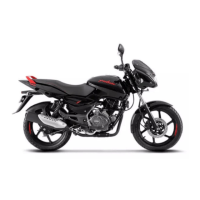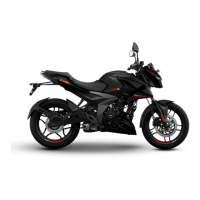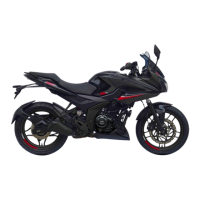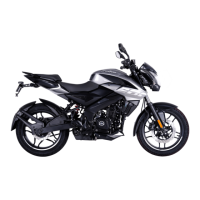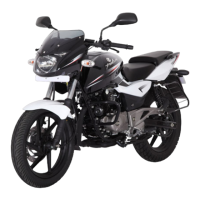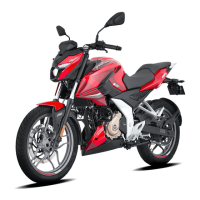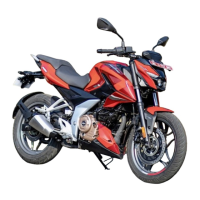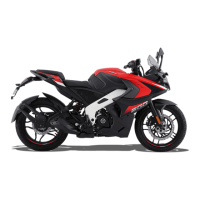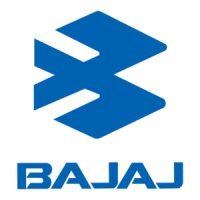

Do you have a question about the Bajaj Pulsar 150 CC DTS-i and is the answer not in the manual?
| Engine Displacement | 149.01 cc |
|---|---|
| Fuel System | Carburetor |
| Transmission | 5-speed constant mesh |
| Kerb Weight | 144 kg |
| Wheelbase | 1320 mm |
| Ground Clearance | 165 mm |
| Engine Type | 4-stroke, DTS-i |
| Max Power | 14 PS @ 8000 rpm |
| Starting | Self start / Kick start |
| Front Suspension | Telescopic |
| Front Brake | Disc |
| Rear Brake | Drum |
| Fuel Tank Capacity | 15 liters |
| Top Speed | 115 km/h |
Information on frame and engine serial numbers for vehicle identification.
Comprehensive technical details of the motorcycle model.
Instructions for opening fuel tank cap and fuel tap positions.
Explains functions of dipper, turn signal, horn, and pass switches.
Details on headlight switch, starter, and engine kill switch.
Location and basic information about the battery and tool kit.
Step-by-step guide for removing and installing the vehicle seat.
Guidelines for the initial running-in period to ensure vehicle longevity.
Step-by-step instructions for starting the motorcycle engine.
How to safely move the motorcycle from a standstill.
Proper method for shifting gears while riding.
Correct procedures for applying brakes safely and effectively.
How to stop the vehicle and park it securely.
Advice on how to improve fuel efficiency while riding.
Key checks to ensure proper vehicle operation and longevity.
Procedure for checking and maintaining the engine oil level.
Information on oil capacity and recommended grade for the engine.
Specifics on recommended engine oil for optimal performance.
Guidance on wheel puncture repair and maintaining tyre pressure.
How to adjust and maintain the drive chain slackness.
Care and precautions for the vehicle's battery.
Steps for checking, cleaning, and adjusting the spark plug.
Procedure for checking the front brake fluid level.
Advice for maintaining the vehicle during the rainy season.
List of tasks to be completed before vehicle delivery.
Tasks performed during paid servicing intervals.
How to identify genuine parts and check price labels.


